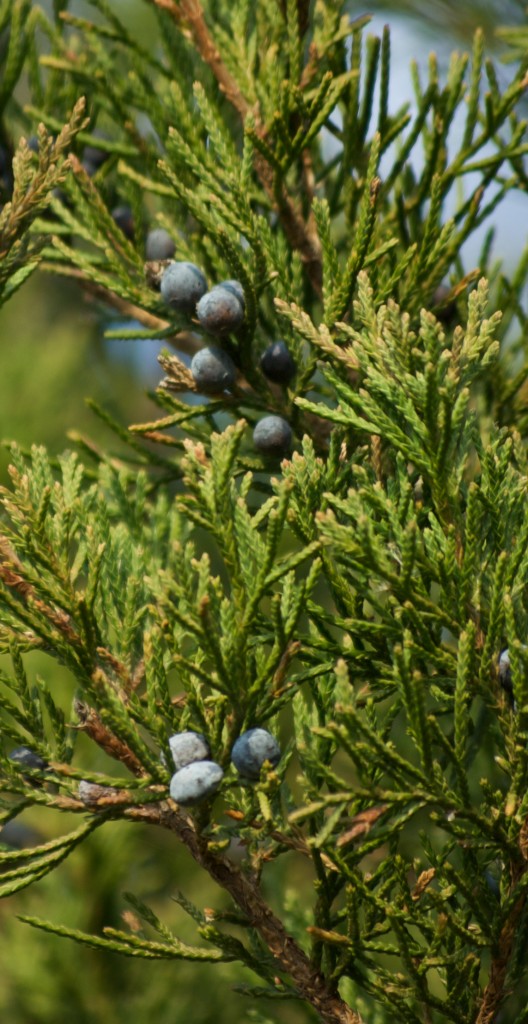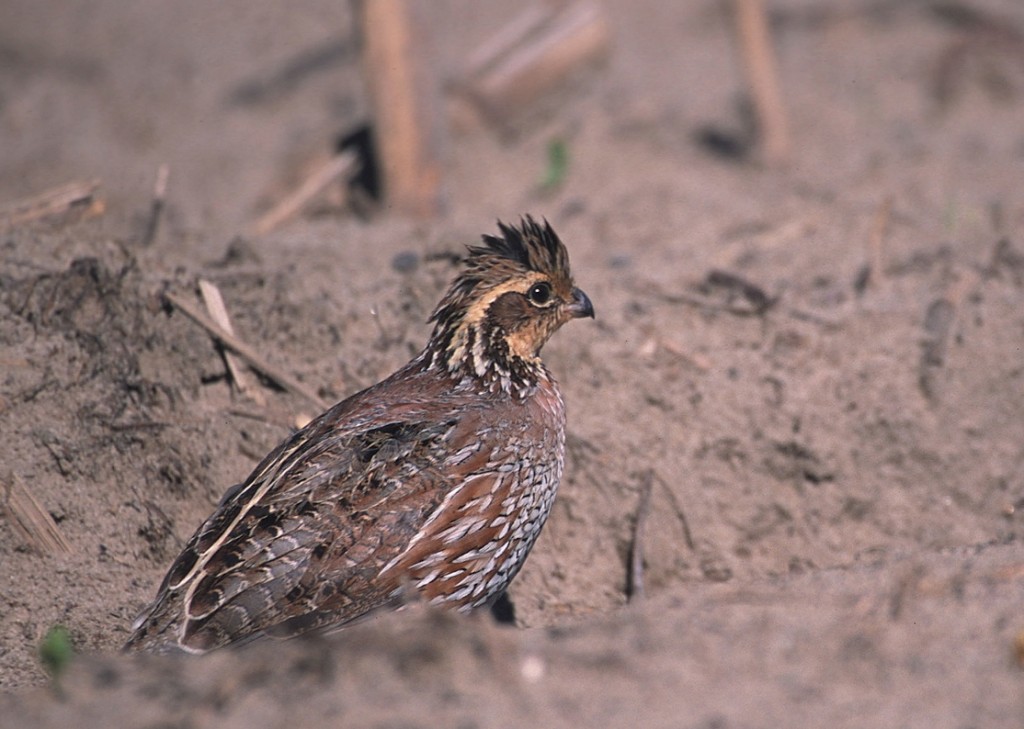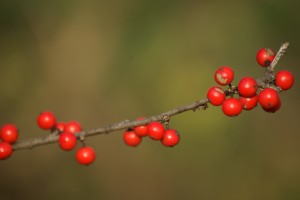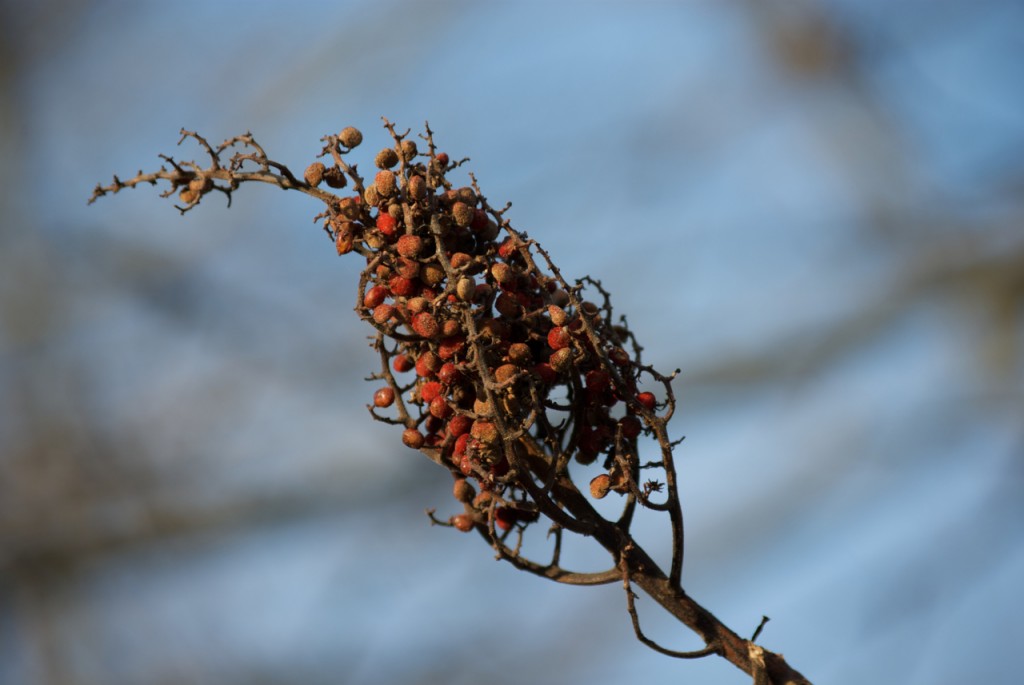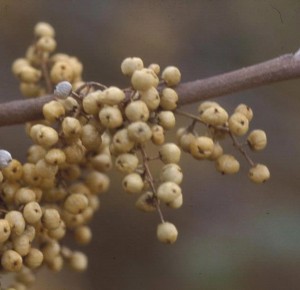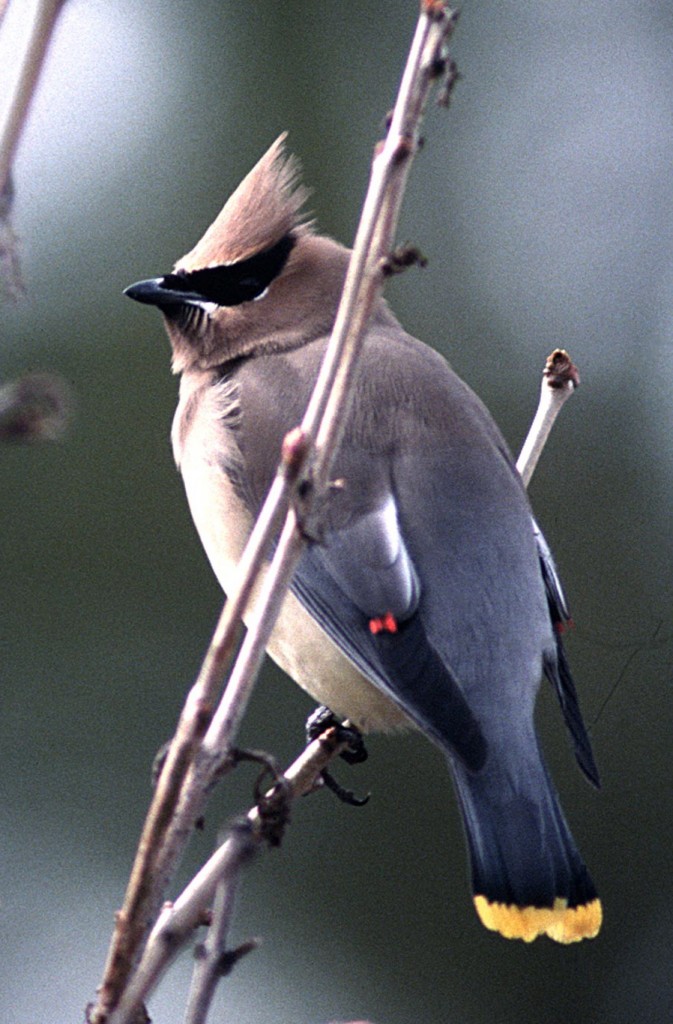It’s the Berries! Bluff Lands’ Critters Depend on ‘Em
Now that cold winter has gripped our bluff lands, many natural sources of animal wildlife foodstuffs are becoming depleted. While “hard mast” oak acorns and hickory nuts strew our forest floor, they will begin to decompose in the winter’s duff. Our grasses and forbs, both important animal food sources, have died back. Crops, which help feed many of our critters, are harvested out of our farm fields. And, many, thin-skinned “soft mast” native fruits — like mulberries, persimmon and blackberries– have already been consumed or desiccated by the cold temperatures.
But, in reserve, many of our common woodland native trees, shrubs, and vines still have berries, which will persist throughout winter and provide a safety net of food sources for wildlife. And wildlife is drawn to berries in winter like a wet dog to a well-dressed visitor.
Our native berries provide an important source of carbohydrates, fats and sugars for wildlife, particularly in the dead and coldest months of winter. Many berries have low appeal to wildlife when they first mature, but alternate cycles of freezing and thawing soften and sweeten the berries, making them more palatable to wildlife.
The dark purple fruits of our warty-knobbed hackberry trees are favorites of fox, squirrels, quail, and turkey. They also support 24 species of birds and are adored by flickers, sapsuckers, mockingbirds and cardinals. Hackberry berries are also a favorite food of our reclusive and seldom seen nocturnal flying squirrels.
Eastern red cedar trees, trooping along fencerows, invading old fields, and skulking deep in the woods, provide valuable nesting and roosting habitat for birds. Their dark blue berries with a whitish blush overall, which are borne only on the female trees, are favored by bobwhite quail, turkey, rabbits, fox, skunks, opossums, red squirrels (but not gray squirrels), and coyotes. In addition, they attract 54 species of birds, especially our wintering-over cedar waxwings, mockingbirds and thrashers.
As the name indicates, possum haw, or swamp holly, also produces fruits loved by opossums. Our only native holly produces bright red fruits, which remain on the tree during the winter so long as birds and mammals let them stay. Although the secondary name suggests this holly only grows in moist soils, it actually can be found far from bottomland woods and does well in a variety of habitats, including our drier upland woods.
The red berries of flowering dogwoods and the white berries of rough-leaved dogwoods, both high in calcium and fat content (24% by weight), help sustain all 62 species of mammals in the county, turkey and quail, and 40 other species of birds. Woodpeckers, cardinals and bluebirds especially adore these berries.
Dogwoods, among some of our other native berry-producing trees, demonstrate an important evolutionary reproductive strategy called “foliar fruit flagging.” The berries bright colors combined with brilliant fall foliage readily attract wildlife, which consume the berries and then drop seeds, often miles from the tree, insuring greater reproductive success for the tree.
A number of shrubs, in addition to rough-leaved dogwoods, also produce wintertime berry food for wildlife. Spicebush’s glossy red berries are favorites of rodents and squirrels and also sustain about 20 species of bird life.
Smooth sumac’s clustered red berries attract small rodents and 31 species of birds, especially bluebirds. White-tailed deer also like the berries. But the sumac’s best friend is a cottontail rabbit. Studies have shown that sumac seeds in rabbit pellets germinate at a much higher rate than any other eaten or uneaten sumac seed.
Our native Viburnums — black haw, nannyberry and rusty nannyberry — produce blue-black berries eaten by game birds, robins, bluebirds, thrashers, Eastern chipmunks, and squirrels. Viburnum berries however often rot on the twig. There low fat content dampens their appeal for much wildlife.
Whether growing as a shrub or in vine form, the small white berries of poison ivy are an important food source. More than 60 species of birds relish the fruit. Many are fall migrants attracted by “foliar flagging,” others are winter residents including bobwhites, yellow-rumped warblers, and flickers. Animals seem to have no difficulty with this plant, richly colored and attractive red in the autumn, which causes a scratchy, weepy itch on contact for most people.
Hanging like ropes from the forest’s canopy, wild grapes provide oodles of soft mast to stock the wildlife larder. There are five species of grapes native to Monroe and Randolph Counties. The grapes are eaten in winter by bobwhite quail, turkey, pileated and red-bellied woodpeckers, thrushes, waxwings, cardinals, and deer. Raccoons, opossums, skunks and squirrels also eat wild grapes.
Among other native vines, the berries of American bittersweet feed 15 species of birds and small mammals. And our very common Virginia creeper, a member of the grape family, which sports beautifully brilliant fall foliage and luscious and nutritious blue berries, supports an additional 35 species, including skunks, foxes, deer, flickers, woodpeckers, bluebirds, thrashers, robins and fox sparrows. Fermented Virginia creeper berries on the vine will occasionally mildly intoxicate wildlife.
So please proceed with caution in our bluff lands vast forests, carefully marking your distance from tipsy thrashers or stumbling skunks. And, if you are inclined to conserve and support our myriad of wildlife, take care of the berry-producing native trees and shrubs in your woodlots and lawn edges, and consider planting more of them for the benefit of wildlife.
Clifftop, a local nonprofit organization, is focused on preserving and protecting area bluff lands.
A version of this article appeared in the December 3 2010 edition of the Monroe County Independent.
© 2010 all content rights reserved, Clifftop NFP.
Comments are currently closed.

